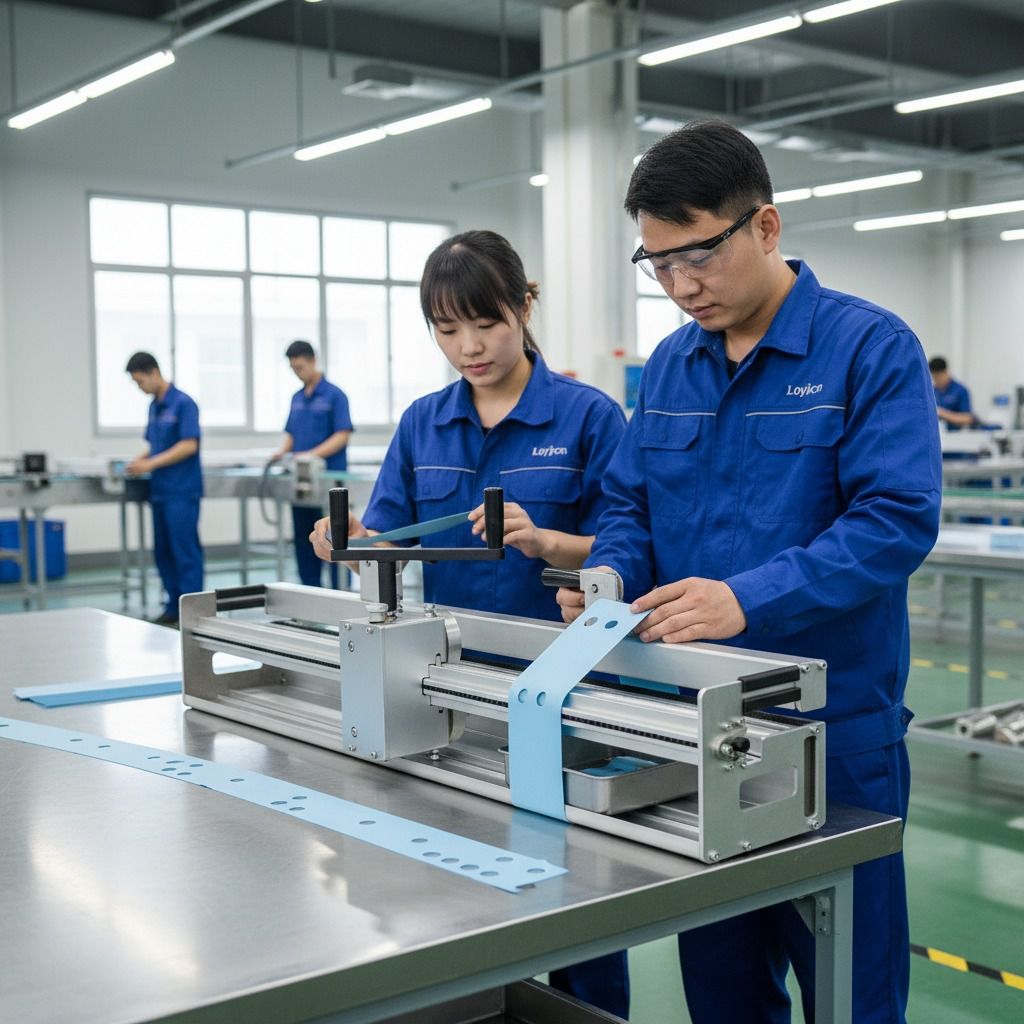Belt hole punching equipment
Early Detection of Conveyor Belt Misalignment Before Severe Damage Occurs
One of the most common causes of severe conveyor belt damage is misalignment, in case you were unaware. When misalignment occurs, it not only reduces operational efficiency but also leads to high repair costs. Therefore, early detection of conveyor belt misalignment signs will help avoid serious consequences later on.
What are the signs of conveyor belt misalignment?
Early signs can be observed, such as unstable belt running, uneven wear on the belt edges, or severe belt vibration/shaking.
Other contributing factors include non-concentric or worn-out roller shafts that cause the belt to deviate from its track, or insufficient structural rigidity of the conveyor frame, leading to deformation during operation.
In many cases, a stretched or uneven belt due to prolonged use without maintenance, or dust and contaminants adhering to the rollers that change the friction and create uneven gaps, can also be causes. Therefore, it is crucial to inspect immediately upon noticing these phenomena to implement timely adjustments and prevent the damage from spreading to the entire system.
Causes of Conveyor Belt Misalignment
Some common causes include:
- Non-concentric or worn-out roller shafts causing the belt to deviate from its track.
- Insufficient structural rigidity of the conveyor frame, prone to deformation during operation.
- Stretched or inaccurately punched belt, leading to installation errors.
In fact, many cases of misalignment stem from uneven or incorrectly positioned holes punched on the belt, often due to manual operation. This is why belt punching equipment was developed—to ensure absolute precision in every hole position, keeping the belt running straight and stable.
For example, industrial PVC, PU conveyor belt hole punching machines allow users to precisely adjust the distance and diameter of the holes down to the millimeter, helping to correctly position splices or guiding pins, thereby ensuring the belt runs straight and avoids misalignment throughout the operation.
Reference: Loyicn RLM1200 PVC PU PVK Conveyor Belt Punching Machine

Is there a way to help detect conveyor belt misalignment early?
To detect conveyor belt misalignment early, you cannot overlook the role of support equipment such as specialized belt hole punching equipment and modern inspection and calibration techniques.
Belt hole punching equipment allows for the precise correction of belt errors right from the installation and repair stage, keeping the belt the correct size and uniform, thus limiting the risk of misalignment. Combining these solutions helps maintain stable conveyor operation, significantly reducing downtime and maintenance costs.
Notes for Long-Term Optimal Conveyor Operation
The correct use of belt hole punching equipment is crucial in maintaining the accuracy and stability of the conveyor belt. You should perform periodic inspections, ensuring the holes on the belt are truly synchronized with the guiding system.
Additionally, you also need to coordinate inspections of the rollers, idler shafts, and guiding components to detect wear, cracks, or perform regular cleaning to reduce uneven friction. This helps keep the system stable and minimizes misalignment.
Conclusion
Early detection of conveyor belt misalignment is key to protecting your equipment and improving operational efficiency. You should consider investing in professional technology and inspection procedures today to keep your conveyor running stably and efficiently for a long time.
-
-
-
-
-
-
-
-
-
-
-
-
-
-
-
-
-
-
-
-
-
-
-
-
